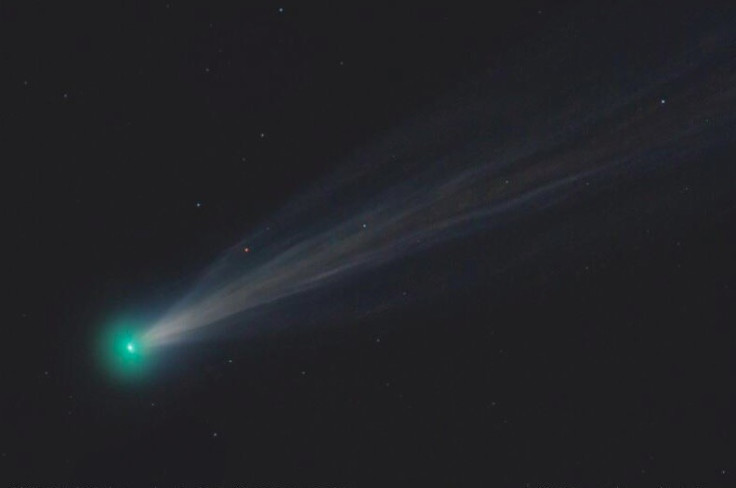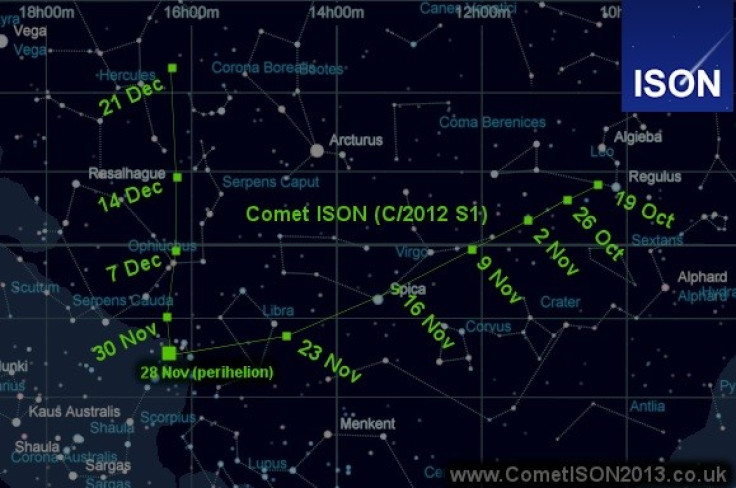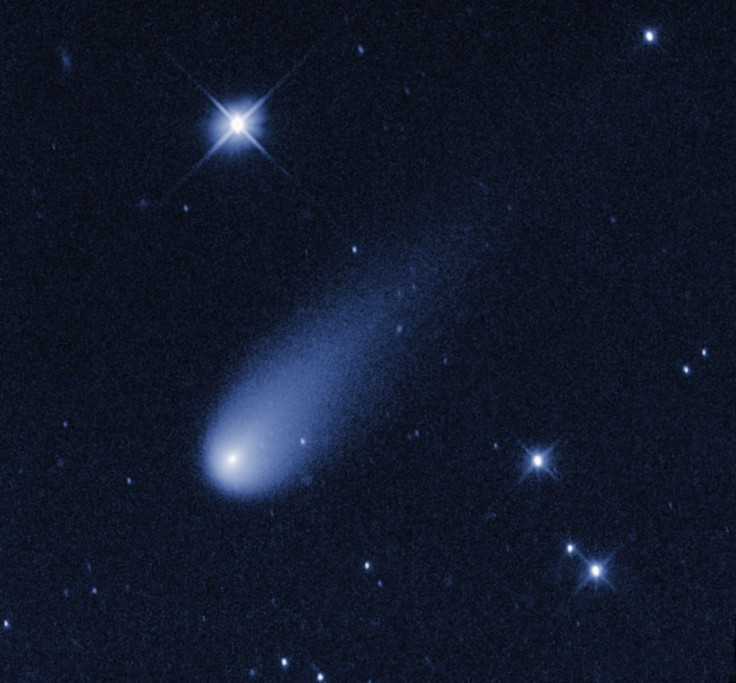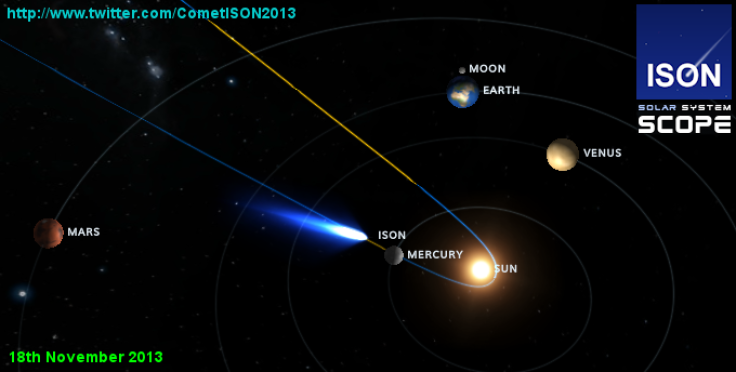Comet of the Century: Where to Watch Ison Before Close Encounter with Sun [PHOTOS]

Dubbed the Comet of the Century, Ison is set to shoot past the sun at 845,000mph on 28 November.
Astronomers and stargazers have already started reporting sightings of the comet, which will become increasingly visible as it nears the sun. It is expected to catapult around the star 1.2 million miles above its surface.
Comet Ison is believed to be around three miles in diameter. If it survives the solar encounter, the comet will slingshot around the far side of the sun and reappear in the sky in January.

Astronomers are unsure whether Ison will survive its close encounter - known as perihelion - or burn up.
"[By] mid-November, Comet Ison should have brightened enough to become a naked-eye object, then as it drops lower in the sky, its tail should become even more [obvious] before disappearing for a few days behind the sun's glare," Comet Ison astronomers said.
"After perihelion on 28 November, if it survives we should be in for a real treat as Comet Ison emerges tail-first to be viewable in both the evening and morning skies."

Comet Ison was discovered by two Russian astronomers, Vitali Nevski and Artyom Novichonok, in September 2012.
The comet will pass Spica, the brightest star in the constellation of Virgo before moving towards Mercury and Saturn at the end of the week.

It will move into Libra the following day and will fade from view as it becomes obscured by the sun's rays.
"Comet Ison will continue to move northwards throughout December, and by Christmas be high in the sky to be visible all night long," said an expert.

IBTimes UK looks at where to watch the Comet of the Century:
London
The WaterWorks Nature Reserve in the Lee Valley, east London, is a Dark Sky Discovery Site recommended for stargazing. Clapton station is a 10-minute walk away and the nearest tube is Walthamstow Central. The reserve shuts at 18.30 but the golf course and Hackney Marshes have public right of way so are always open.
Birmingham
The Barr Beacon Local Nature Reserve is the highest point in Walsall with panoramic views of the landscape. It is three miles from Walsall town centre and can be reached by Beacon Road, with footpath access from Bridle Lane, Sutton Park and Beacon Road. It is open 24 hours but car parks are closed at night.
Bournemouth
Durlston County Park covers 280 acres and is situated on the Isle of Purbeck in Dorset. It is 20 miles from Bournemouth and 40 miles from Southampton and has an astronomy centre that is holding an event on 7 December - so should Comet Ison survive its encounter with the sun - it would be handy location to watch from.
Norwich
Located about 30 miles from Norwich, the Suffolk Coast National Nature Reserve has hardly any light pollution so is ideal for watching the night sky. It can be reached from the B1387 going west. After Walberswick, there is a car park open all year to the public.
Oxford
South Park in Oxford city centre has 24-hour access and good visibility for stargazing. The best visibility is in the centre of the lower area, which can be accessed through the gates on Morrell Avenue or Headington Hill, Dark Sky Discovery says.
Bristol
Victoria Park in Bristol is a 60-acre part in the south of the city. It can be accessed by the A4 and visitors are advised to take a torch to light the footpath at night. Durdham Down, which is just two miles from the city centre, is also recommended.
Cardiff
Crai village has some of the darkest skies in the Brecon Beacons and has views of all horizons with minimal light pollution. From the M4, motorists should take the A4067 for 22.5 miles and then follow signs to the village.
Sheffield
Just 11 miles from Sheffield, Surprise View on the outskirts of Hathersage has a panoramic view of the Hope Valley and very dark skies for stargazing. Located between Fox House and Hathersage, the car park opens onto the A6187 and observers are advised to bring a torch.
Carlisle
Clesketts car park on the RSPB Geltsdale Reserve is about 10 miles from Carlisle and is open all year round. Drivers are advised that the track to the car park is rough in places and there may be traffic from nearby farms.
Glasgow
According to the Stargazers Lounge forum, Mugdock Country Park just north of Glasgow and Muirshiel Country Park both offer dark skies for stargazing, as well as Balgray Reservoir in Cowan Park, around 10 miles from the city centre.
© Copyright IBTimes 2024. All rights reserved.









